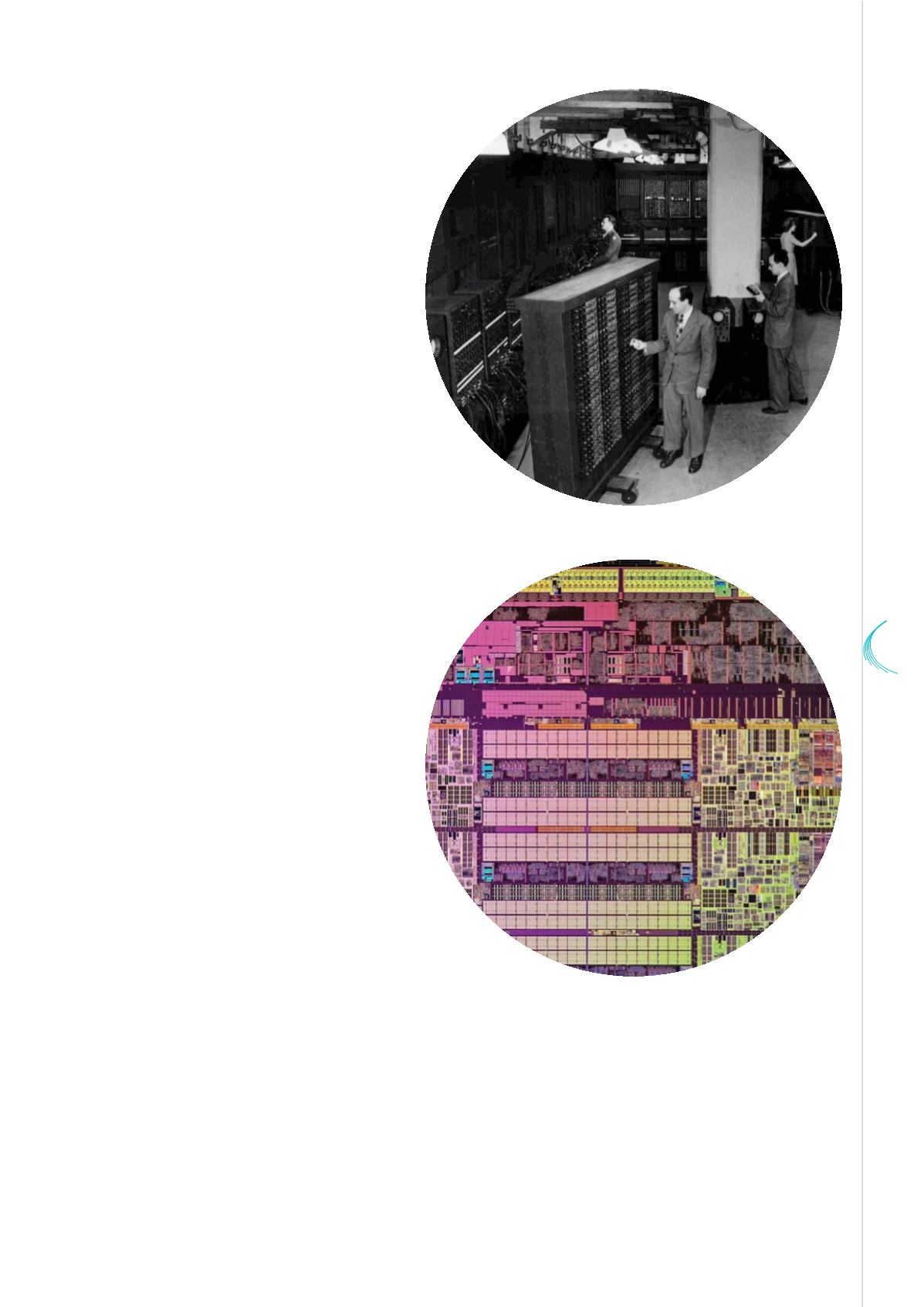

350
YEARS
OF
SCIENCE
77
The Electronic Numerical Intergrator
Analyser and Computer (ENIAC)
© INTERFOTO - Alamy
© Nick Knupffer - Intel
Intel
®
Core
™
i7-5960X Processor
Informatics in the industrial era
The industry of computers really started
booming at the beginning of the 1970s
with the use of the transistor and then
the invention of the integrated circuit and
the implementation of Moore’s law, which
expresses the concerted decision of the
industry to double the number of transistor
per surface unit more or less every two
years. Indeed, there was quite a move
from the 17 500 vacuum tubes of ENIAC
in 1946 to the 2 250 transistors of Intel
4004 in 1971, and then to the billions of
transistors inside the microchips of today’s
computers. This exponential law is getting
weaker, though, for reasons certainly
physical but most of all economic: even
though it produces tiny objects, the
industry of circuits has become the
heaviest in the world in terms of costs of
production factories as well as research
and development. So far, we have never
needed to leave the world of electronic
circuits etched onto silicon wafers. Other
technologies are finally being liberated
and might take over – physicists to the
rescue!
Computers have been progressively
connected to one another and networked,
so much so as to form the actual Internet, which
connects billion machines and will still grow enormously
as all sorts of computerized objects will connect. But the amount
of data to be processed is expanding at even faster a speed, whether because of human interaction or
because measurements and experiments have induced progress in all fields of science and medicine.
It is said that, over the last two years, more data has been produced than since the birth of mankind.
Processing such this data deluge is key for the future.


















